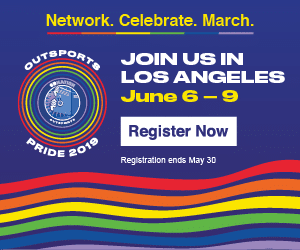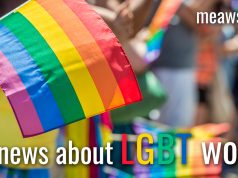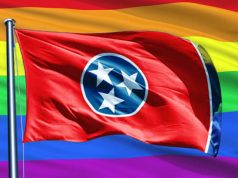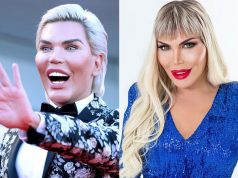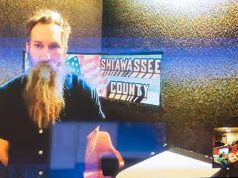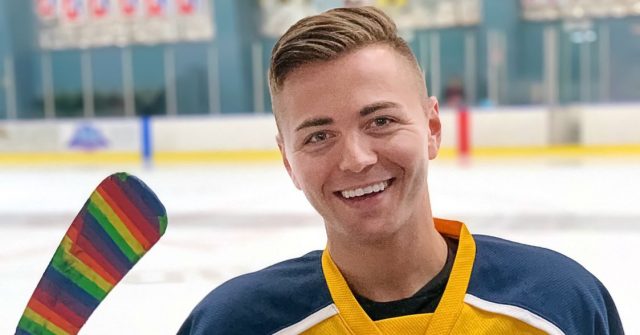
One of my closest college mentors passed on a lesson that has stayed with me since my years at Drake University. “Regardless of how big or small, do something every day to queer the space around you.”
I’ve carried this charge with me into my professional career since graduating. But it’s the pushback and challenges against it in the hyper-masculine sport of hockey that has taught me so much more.
I grew up in Minnesota — the self-described “State of Hockey.” I’ve always had a love for watching and playing the sport. However, as I matured and understood my own sexuality more, the toxic language and homophobic “chirps” that get hurled around on the ice have often made it discouraging and uncomfortable for me to play.
I’m by no means a superstar player. I grew up playing in a league and, as a typical Minnesotan would, played endless hours of pond hockey. After graduating from Drake University, I joined a hockey league in Des Moines, Iowa. I was reluctant to join at first since I didn’t know any of the players, but foremost, I was worried that being gay would get in the way.
When you look in sports and entertainment today, you can find more prominent queer figures than ever before. I’m sure many can name an LGBTQ+ Olympian, soccer player, skier or figure skater. But in men’s hockey? The NHL? No one.
I genuinely wish I had a queer hero to look up to in hockey.
We’re still not in a place in society where professional athletes can be comfortable being who they truly are. I genuinely wish I had a queer hero to look up to in hockey. Someone that could pave the way for some normalcy and a degree of acceptance in the sport.
I came out when I was 20 and quickly found myself in situations where I was the first or only queer person to do something. I joined a fraternity, and at the time, was the only out member. When I graduated and found a job at an ad agency in Des Moines, I was the only queer person at the company. My mentor at Drake always challenged me to queer the spaces I was in.
Queering a space can be something like: prominently showing a rainbow flag or pin on an outfit or your desk; introducing yourself using your pronouns; using or recommending alternative phrases for derogatory language; or wearing makeup/nail polish if it’s not typically associated with how you identify. As I became the “first” or “the only” to do things, this concept began to take shape and build importance in my life, especially as I started to play more hockey.
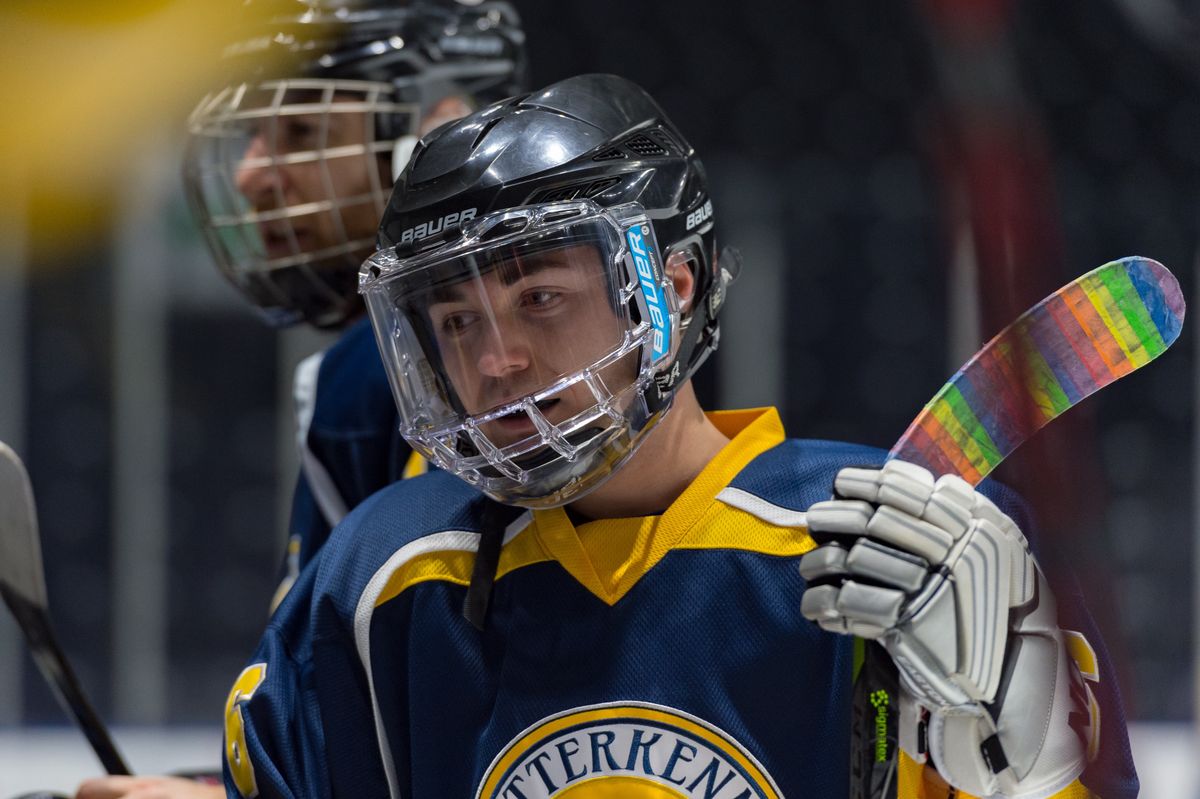
Joey Gale with his stick wrapped in Pride Tape.
In 2016 I was introduced to Pride Tape — a rainbow-colored role of hockey tape. Pride Tape is a symbol of support from those who play with it that supports LGBTQ youth initiatives like You Can Play. Around this same time, the hockey league I was playing in was nominating players for an All-Star game later in the season. Miraculously, I was selected by players in the league to compete in the big game.
Using the game as an opportunity to queer hockey and come out to my teammates, I bought a roll of Pride Tape and taped up my stick for the game. Hours before the game I rehearsed how I would respond if someone asked about the tape.
It seemed so out there for me to do, like I was driving a nail into a massive balloon of masculinity. I was terrified. In reality, it felt more like a protest, as if the tape on my stick were shining a light onto a sport too afraid to acknowledge difference, sexuality and hate.
Arriving at Wells Fargo Arena in Des Moines, Pride Tape and all, I made my way down to the locker room and set my stick outside the door next to my teammates’ sticks. It hit me hard when I looked down at all of the black and white taped sticks — mine wasn’t just different, it stood out.
“Who’s got the gay tape?”
I nervously sat down, and moments later, a teammate shuffled in and asked the locker room of 14 guys, “Who’s got the gay tape?” In an afternoon where I felt so vulnerable, this moment was shattering.
The silence in the locker room washed over me and my heart raced. I knew that this was likely my only chance to come out, so I responded to the group. I can’t remember a word I said, but I was relieved by the response from my teammates.
I saw smiles across the room and heard affirmation from my teammates. While it was an extremely defining experience for me, it was merely a baby step forward for the hockey community.
I knew that if a small league in Des Moines, Iowa, could be so accepting, the sport as a whole had promise. After taking a few deep breaths and stepping onto the ice, I skated knowing I had support. The positivity must have hit me hard as the league selected me as most valuable player of the All-Star game.
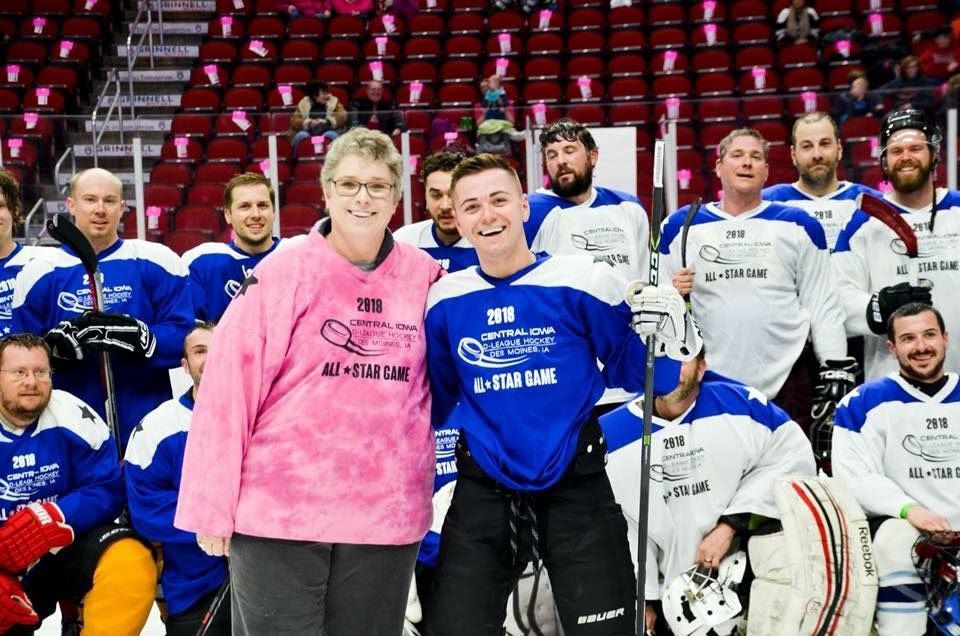
Joey Gale in his MVP moment.
Since then, Pride Tape has made some pretty big steps forward in the NHL with players and organizations. Queering a space that’s historically been full of homophobia takes courage from all angles. LGBTQ allies across the league are helping pave the way in hockey like never before. This type of support on and off the ice helps create space for players like me to come out.
We aren’t there yet, though. Hockey needs more rainbows and Pride Tape. We need to safely call out our friends, teammates and coaches when they use language like “that’s so gay,” “faggot” or “tranny” in derogatory ways.
We need more open allies. We need clear and protective non-discrimination policies. And most importantly, hockey needs more openly gay, trans, lesbian and bi players to help champion this movement. To any LGBTQ hockey players still afraid to come out, we love you and we need you. Let’s queer this space together.
Joey Gale, 26, graduated from Drake University in 2015 where he studied marketing, information systems and leadership. He lives in Seattle, works at an ad agency, and plays in the Greater Seattle Hockey League. He can be reached at josephjgale@gmail.com, on Instagram or Facebook (facebook.com/joey.gale)
Story editor: Jim Buzinski
If you are an out LGBTQ person in sports and want to tell your story, email Jim (kandreeky@gmail.com).


